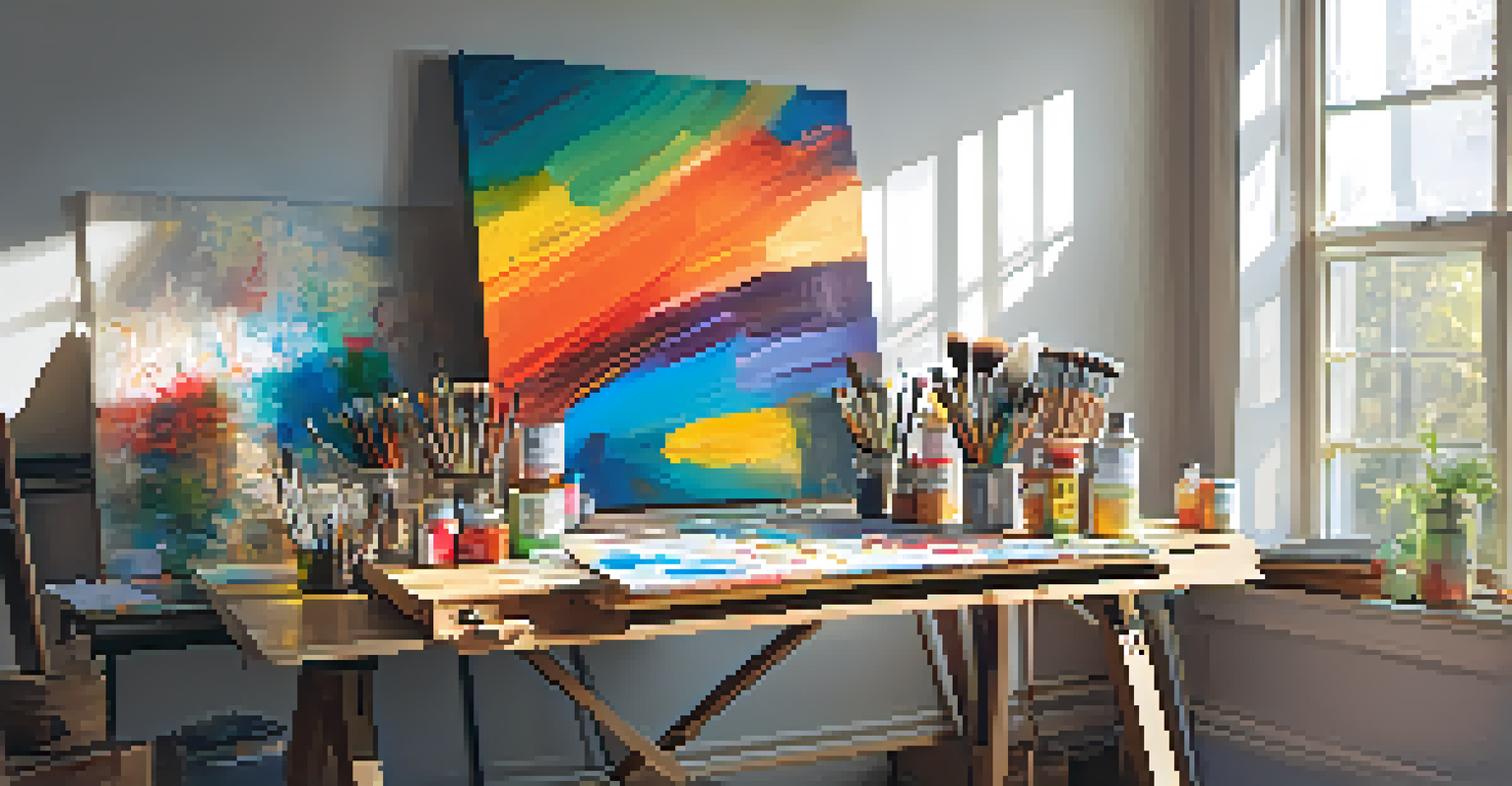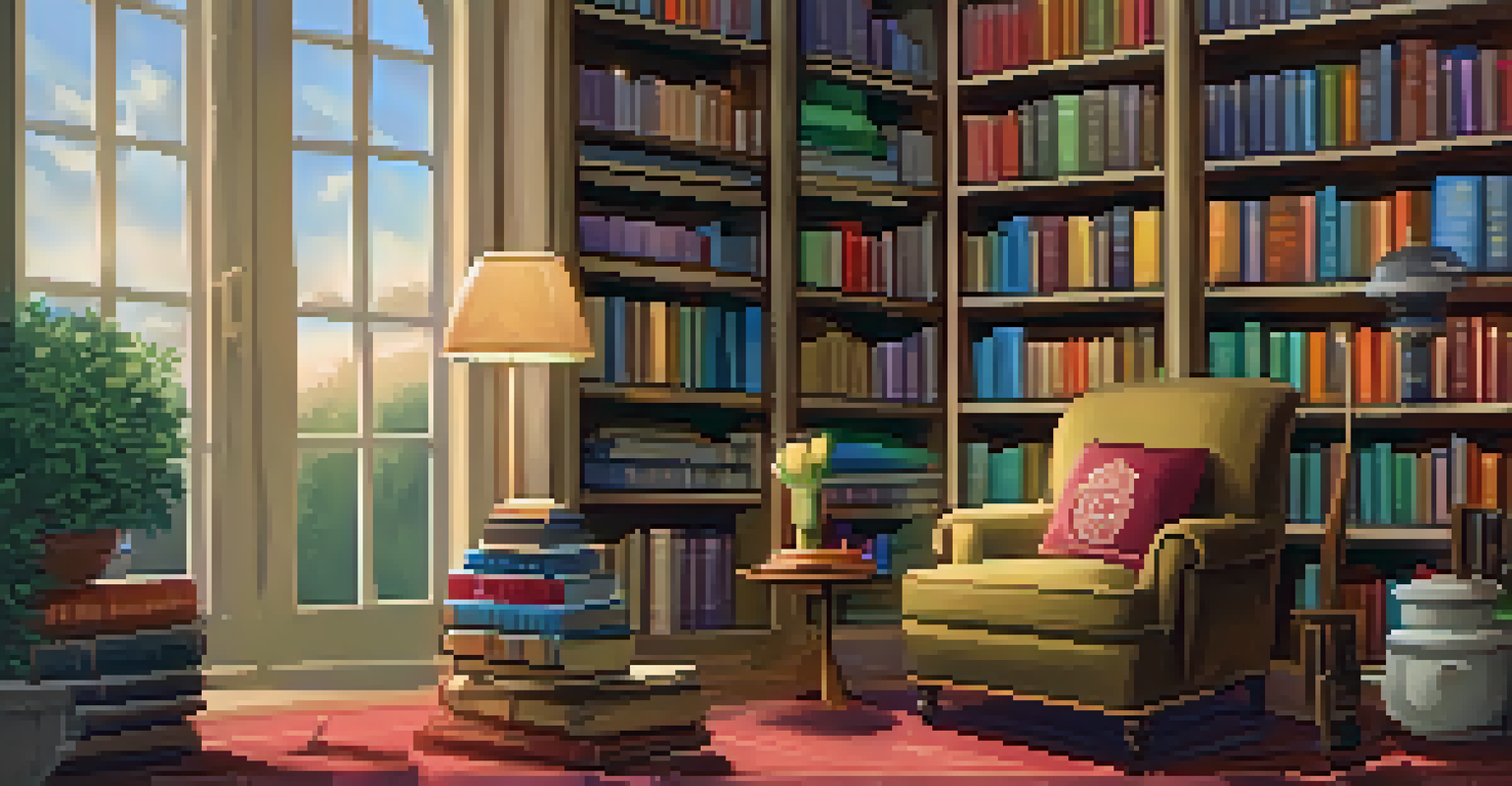Understanding Copyright: Respecting Digital Content Rights

What is Copyright and Why Does It Matter?
Copyright is a legal protection granted to the creators of original works, allowing them exclusive rights to use and distribute their content. This means that if you write a song, create a photo, or develop software, you hold the copyright to that creation. Understanding copyright is crucial because it not only protects your own work but also helps you respect the rights of others in the digital space.
Copyright is the most important thing in the creative world. It allows artists to protect their ideas, creativity, and innovations.
In our digital age, where sharing and remixing content is common, respecting copyright is more important than ever. Ignoring these rights can lead to legal issues, and it’s always best to engage with content ethically. By understanding copyright, you can navigate the complex landscape of digital content with confidence.
Moreover, copyright encourages creativity and innovation by ensuring that creators can reap the benefits of their work. When we respect copyright, we contribute to a culture that values and supports originality, fostering a vibrant digital community.
Types of Copyrighted Works
Copyright covers a wide range of creative works, from literature and music to software and visual arts. Each type of work has its own nuances in terms of copyright protection. For example, a novel is protected in its written form, while the underlying ideas are not, which means others can explore similar themes without infringing on copyright.

Another important category is derivative works, which are adaptations or transformations of existing content, like movie adaptations of books or remixes of songs. These also require permission from the original creator, highlighting the need for clarity when using someone else's work.
Understanding Copyright Basics
Copyright protects creators' original works, granting them exclusive rights to use and distribute their content.
Understanding the types of copyrighted works can help you navigate permissions and licensing. It’s essential to know what you can and cannot do with different types of content to avoid unintentional infringement.
How Copyright Differs from Other Rights
Copyright is often confused with other forms of intellectual property, such as trademarks and patents. While copyright protects creative works, trademarks safeguard brands and logos, and patents protect inventions or processes. Each serves a unique purpose in the realm of intellectual property.
Intellectual property is the oil of the 21st century.
For instance, if you invent a new gadget, a patent would protect your invention, preventing others from making or selling it without your permission. On the other hand, if you write a song, copyright ensures that you have control over who can use that song commercially.
Recognizing these differences is crucial for creators and consumers alike. It allows individuals to understand their rights and responsibilities, ensuring that they respect not only copyright but also other forms of intellectual property.
The Duration of Copyright Protection
One common question surrounding copyright is how long it lasts. In most cases, copyright protection lasts for the life of the creator plus a certain number of years, typically 70 years, depending on the jurisdiction. After this period, the work enters the public domain, meaning anyone can use it without permission.
However, there are exceptions, such as works created for hire, where the duration may differ. Understanding the duration of copyright helps creators plan for the future and decide how they want to manage their works over time.
The Importance of Fair Use
Fair use allows limited use of copyrighted material without permission, fostering creativity while respecting original creators.
This timeline is important for both creators and users of content. Knowing when a work enters the public domain opens up opportunities for reuse and inspiration without legal concerns, fostering a new wave of creativity.
Fair Use: A Key Exception to Copyright Rules
Fair use is a legal doctrine that allows limited use of copyrighted material without permission from the creator. This can include criticism, commentary, news reporting, teaching, or research—essentially, situations where the use is transformative or adds new meaning. Understanding fair use can help you use content responsibly while respecting copyright.
For example, a book review might quote a few lines from the book to analyze its themes. This is considered fair use because it serves a different purpose than the original work and doesn’t harm the market for the book. However, fair use is a gray area, and what qualifies can vary significantly, so it’s wise to tread carefully.
Navigating fair use requires a balance between your intentions and the rights of the original creator. When in doubt, seeking permission or consulting legal advice can save you from potential disputes.
Respecting Copyright in the Digital Age
With the rise of the internet and digital content sharing, respecting copyright has become increasingly complex. Social media platforms and streaming services have made it easy to share and remix content, but this can lead to unintentional copyright violations. Being mindful of this landscape is essential for anyone engaging with digital content.
For instance, when you share a video or image, it’s crucial to check if it’s protected by copyright. Using licensed stock images or creative commons content can be a safe way to avoid copyright infringement while still enhancing your work.
Protecting Your Own Copyright
Creators can safeguard their work by registering copyrights and using notices to assert their rights.
By respecting copyright in the digital age, we contribute to a culture that values creativity and the rights of creators. This mindful approach not only protects individual creators but also enriches the entire digital ecosystem.
How to Protect Your Own Copyrighted Works
For creators, protecting your own copyright is essential to ensure your work is not used without your permission. The simplest way to establish your rights is to create your work and fix it in a tangible medium, like writing it down or recording it. However, registering your copyright with the relevant authorities can provide additional legal benefits.
Registration often makes it easier to pursue legal action if someone infringes on your rights. It also serves as a public record of your ownership, which can deter potential infringers. Understanding these processes can empower you to take control of your creative output.

Additionally, using copyright notices on your work can remind others of your rights. Simple phrases like '© [Year] [Your Name]' can signal that the work is protected, encouraging respect for your creative efforts.